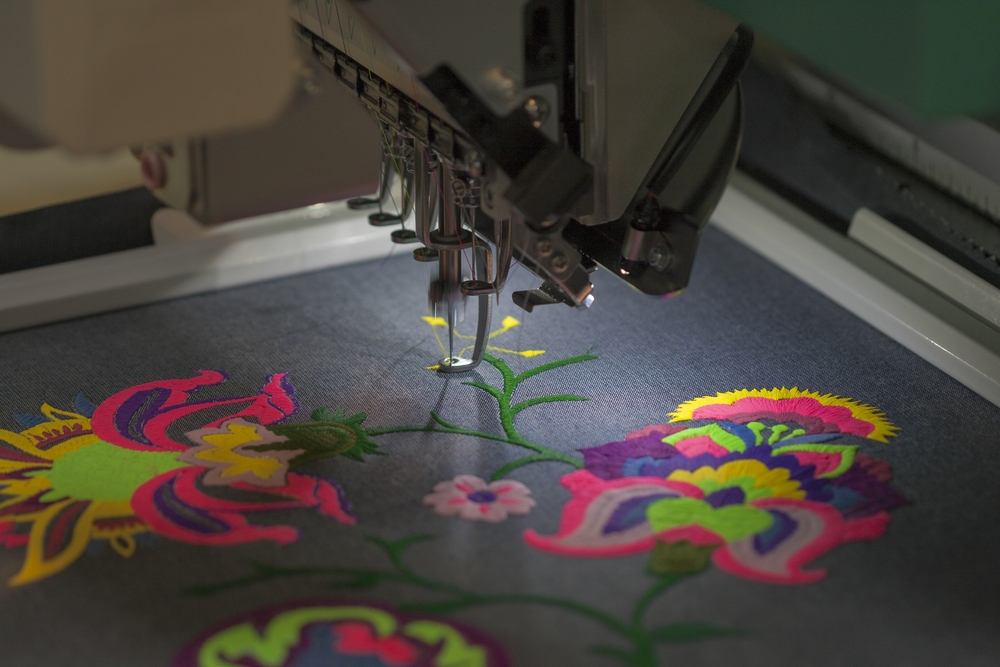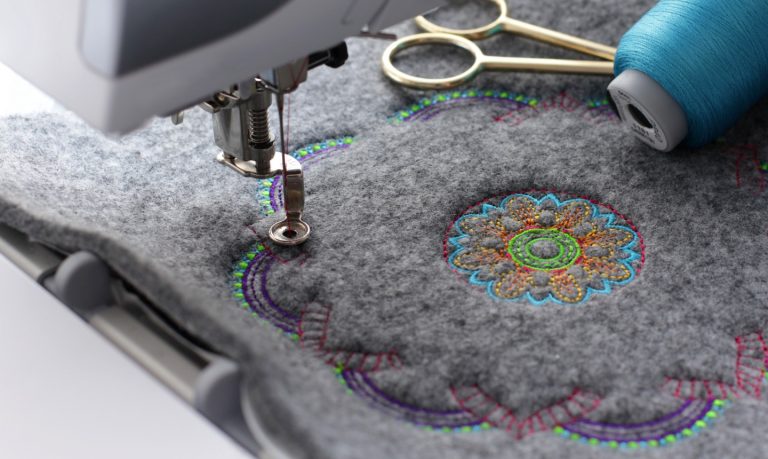Finest Digitizing for Embroidery: Enhance Your Projects
Finest Digitizing for Embroidery: Enhance Your Projects
Blog Article
Streamlining the Art of Embroidery Digitizing: Step-by-Step Guide
Needlework digitizing is a thorough craft that requires precision and creativity. As technology proceeds to development, the digitization procedure has actually ended up being more accessible, permitting lovers to bring their elaborate designs to life easily. In this guide, we will untangle the complexities of needlework digitizing, damaging down each step carefully to enhance the process and encourage both novices and seasoned embroiderers alike. Keep tuned to find how you can streamline this elaborate art form and change your imaginative visions right into wonderfully stitched masterpieces.
Understanding Embroidery Digitizing Software Program
Embroidery digitizing software application works as a critical tool for changing detailed styles into electronic formats compatible with needlework machines, facilitating specific stitching and personalization. This customized software allows individuals to import numerous photo data layouts, such as JPG or PNG, and convert them into embroidery machine-readable styles like DST, EXP, or PES - Digitizing for Embroidery. By making use of attributes like stitch editing, rug alternatives, and thread shade choice, digitizing software program makes it possible for users to control every element of the style process
Furthermore, progressed needlework digitizing software program supplies devices for developing complex designs, adjusting stitch density, and integrating complex details. Individuals can likewise preview the style before stitching it out, making sure accuracy and decreasing mistakes. Additionally, many software application offer automatic functions that assist enhance the digitizing process, saving effort and time.
Understanding the capacities of needlework digitizing software program is vital for accomplishing top notch cause embroidery projects. By understanding this device, embroidery enthusiasts and professionals can release their creative thinking and bring complex styles to life with precision and performance.

Choosing the Right Style Documents
After acquainting on your own with the abilities of embroidery digitizing software, the next crucial action in the procedure is choosing the ideal style apply for your project. Digitizing for Embroidery. When picking a layout declare embroidery digitizing, it's important to consider the intricacy of the style, the size of the final item, and the type of fabric you will certainly be functioning with
For elaborate styles with great details, a high-resolution picture or vector data is recommended to ensure that the needlework device can accurately duplicate the style. Additionally, the dimension of the end product plays a substantial function in picking the appropriate layout documents. Larger styles might call for higher resolution files to maintain clearness and sharpness.
Additionally, the sort of material you will certainly be embroidering on affects the choice of style data. Different materials may require changes in the design documents to ensure that the stitches are correctly lined up and the layout looks like meant. By thoroughly picking the right style data based upon these variables, you can set yourself up for an effective embroidery digitizing procedure.
Digitizing Devices and Methods
Utilizing specialized software application my company and precision strategies, digitizing tools are vital in transforming intricate layouts into embroidery-ready data. Needlework digitizing software program, such as Wilcom, Hatch, or Embrilliance, supplies the needed platform to transform artwork into stitch information. These programs provide functions like stitch modifying, underlay alternatives, and lettering tools to make sure the style equates perfectly onto fabric.
One of the vital techniques in digitizing is developing a clear path for the needlework equipment to adhere to. This involves digitizing each element of the design with accuracy, determining stitch types, thickness, and instructions. By using tools like digitizing tablets or software-specific plugins, embroiderers can achieve a high level of precision in their digitized designs.
Additionally, mastering the art of underlay stitching is crucial for producing high quality embroidery. Underlay stitching supports the fabric and creates a structure for the design, making certain that the last product is both aesthetically appealing and resilient. By comprehending these digitizing devices and techniques, embroiderers can elevate their craft and bring intricate styles to life try this with accuracy and effectiveness.
Personalizing Stitch Kinds and Instructions
Having actually established a structure in digitizing tools and strategies, a crucial element ahead of time needlework craftsmanship lies in personalizing stitch kinds and directions with precision and purpose. The selection of stitch types can considerably affect the general appearance and texture of the stitched design. Satin stitches, known for their smooth and glossy surface, work well for producing borders and message. On the various other hand, fill stitches are excellent for covering larger areas efficiently. By strategically combining these stitch types, embroiderers can achieve depth and dimension in their layouts.
In addition, the direction of stitches plays a vital function in improving the aesthetic charm of the final needlework. By exploring with various stitch angles and patterns, embroiderers can bring their designs to life with impressive information and details.
Screening and Refining Your Digitized Style
To ensure the accuracy and top quality of your digitized style, complete testing and improvement are necessary action in the needlework digitizing procedure. Once you have actually finished the digitization of your style, it is important to check it prior to continuing with the real embroidery. Evaluating permits Learn More Here you to identify any kind of prospective problems such as string breaks, stitch thickness problems, or style distortions that might affect the outcome.

After screening, it is necessary to improve your digitized style based on the feedback from the examination sew-out. This might involve tweaking stitch settings, readjusting thickness, or making modifications to the total style to attain the desired outcome. By iterating via testing and refinement, you can tweak your digitized layout to perfection prior to progressing with the actual needlework process.
Verdict
Finally, mastering the art of embroidery digitizing needs an extensive understanding of the software, choosing the best style file, utilizing digitizing tools and strategies, tailoring stitch types and directions, and testing and refining the digitized design. By adhering to these actions, embroiderers can streamline the digitizing process and produce top notch stitched styles with precision and performance.
Report this page